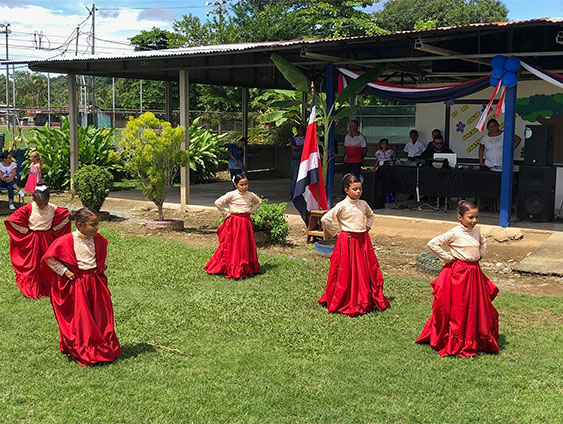Costa Rica was originally inhabited by various indigenous groups, including the native Boruca people that historically ruled the Osa Peninsula. Today, about 2,000 members of the tribe still live in an indigenous reserve located about 14 miles northeast of the Osa Peninsula in the Talamanca Mountains. The Boruca culture is known for brightly-painted masks, the annual Dance of the Devil festival, and colorful stories of local folklore. The Dance of the Devil festival takes place around December 30–January 2 in the Boruca community, and features dancers wearing masks that look like devils to represent the Boruca culture, as well as a person wearing a bull costume to represent the Spanish conquerors. Visitors can experience the Boruca culture by taking a bus or car to the village (33 kilometers from Palmar Norte). Primitive overnight lodging and amenities are available and the small town accommodates hundreds of visitors during festival times.
History and Culture
“
We strive to connect responsible tourists interested
in nature and sustainability with local communities
by using local tour services.
When the Spanish conquistadors came to Costa Rica in the 1500s, most other native tribes besides the Boruca eventually assimilated Spanish customs into their own traditions, and the “Tico” culture of today’s Costa Rica was born. Many locals in Costa Rica, especially in rural areas, still survive as they have for thousands of years, by living off the abundance of the land and sea. However, things have changed dramatically for some, and change is just on the horizon for others. In areas such as Guanacaste and other popular beach towns, rampant and irresponsible development for international tourism has displaced locals. The Tico culture is almost gone from those areas because few Ticos remain there.
Development has been much slower to reach the Osa Peninsula, and because of that, it still supports the last virgin rainforests and conserved coastlines on the Pacific side of Central America. The locals have lived simply by mining for gold, logging, fishing, and hunting in the jungles the Osa Peninsula. But in 1985, gold mining was banned in Corcovado National Park, leaving many locals without income. Officials stress the need for sustainable development and tourism in the region in order avoid a fate similar to Guanacaste, and some hunters have become the best wildlife guides. However, many locals are still struggling with the shift. They understand the value of their homeland and the creatures in it, but much of the tourism profits never reach them. With help from groups such as Caminos de Osa, Turismo Rural Comunitario de Osa, Conservation Association of Dos Brazos de Rio Tigre, and Lokal Travel, locals can host tours and house guests in their homes, helping tourists experience Tico culture. This new sort of immersive ecotourism of the Osa Peninsula is helping local communities preserve and share their unique culture, way of life, and natural resources.
At Casa Roja, we strive to connect responsible tourists interested in nature and sustainability with local communities by using local tour services, and aim to provide support by connecting locals with international networks to spark new capacity building projects.


